Story and Photos by ITN European Reporter Herve’ Rebollo.
Salut à toi, American rider,
Time for my annual summer ride was upon us; it was time to hit the road for a (very) long trip to join the famous PYRENEES MOUNTAINS.
The Pyrenees are a mountain range straddling the border of FRANCE and SPAIN. They extend nearly 500 km (310 mi) from their union with the Cantabrian Mountains to Cap de Creus on the Mediterranean coast, reaching a maximum altitude of 3,404 meters (11,168 ft) at the peak of Aneto.
For the most part, the main crest forms a divide between Spain and France, with the microstate of Andora sandwiched in between. Historically, the Crown of Aragon and the Kingdom of Navarre extended on both sides of the mountain range.
Ok. It was time to ride with the guyz: Pat’ (the Dixxon flanel man) and Xavier (the fisherman).
On a sunny Friday morning, I first left the Paris’ suburbs to join the great South, the Mediterranean sea.
First stage before leaving for a long ride: having good time in the local restaurants, near by the city of Sète.
And the, came the time to go East, to join the Atlantic coast, running the road of Minervois wines.
On the Côte du Midi, the Minervois vineyard extends from the gates of Narbonne to the north and surrounds the Canal du Midi, a UNESCO World Heritage Site. Recognised in 1985 as an appellation, the Minervois has been producing wine since the Romanitian period with a real boom thanks to the construction of the Canal du Midi transporting wines by barge to Bordeaux.
At this time, on this magical road, the temperature was really high. 42 Celsius degrees (107 Fahrenheit degrees). It was hell under the leather jackets.
A lowland vineyard swept by the winds of the Mediterranean and shaped by man, revealing capitelles (dry stone hut used as a temporary shelter in the garrigues of the Gard), and dry stone walls.
The most astonishing remains the “château pinardiers” which bear witness to the abundant viticulture of the last century
But … our secret target was not wine testing. It was … to taste one of the most delicious CASSOULET on this planet earth.
I suppose you know what Cassoulet dish is. No ? Really ?!!!!! I can’t believe it!!!!!!!! Cassoulet is a rich, slow-cooked stew originating in southern France. You can describe it as that sumptuous amalgamation of haricot beans, sausage, pork, mutton and preserved goose, aromatically spiced with garlic and herbs. It originated in the town of Castelnaudary department in the Occitanie region. Variants of the dish are local to other towns and cities in the department.
According to tradition, cassoulet was invented in 1355 in the town of Castelnaudary, under siege by the English during the Hundred Years’ War. In medieval times the dish was referred to as an estouffet. The Dictionary dates the term cassoulet to no earlier than the 19th century. The current name is a diminutive of the Languedoc cassolo – a cooking pot. Elizabeth David states that it comes from “Cassol d’Issel”, the original clay baking pot made in the small town of Issel, near Castelnaudary.
In cassoulets, the haricot bean is now always the principal ingredient. In the medieval period, broad beans (favolles), fresh or dried, were used in stews of the cassoulet type. Sources differ on when haricots were first used instead of favolles: the Oxford Companion to Food states that haricots arrived in France via Spain from the New World.
We especially made a stop for our first stage in a specific place where Pat’ use to go for business in the little city of Villefranche-de-Lauragais. The local hotel offers its own Cassoulet production. And … it’s a blast. After such a degustation, don’t even to ride your bike. Go directly to bed.
On day two, it was time to enter the beautiful Pays Basque/ Basque Country. But not to fast … we took all the necessary time to have out traditional French “Apéro” in the many little villages we crossed along the road.
Apéro is the short way to say French apéritif. Apéro in France is typically recognized as a pre-dinner drink, a moment to relax over a couple of drinks and a few snacks. The French apéritif is a moment of sharing – with family or friends (it works with bikers too) -, and preparing your palate for the meal to follow. And, of course, we think that it’s very important to respect the tradition.
In fact, our first intention was to join the French Pays Basque. Basque Country, cultural region within the département of Pyrénées-Atlantiques, extreme southwestern France, bordering the western Pyrenees Mountains where they adjoin the Basque provincias of Spain, along the Bay of Biscay is one of the most beautiful place of the part of Europe.
The Basque Country (Basque: Euskal Herria; Spanish: País Vasco; French: Pays basque) is the name given to the home of the Basque people. The Basque Country is located in the western Pyrenees, straddling the border between France and Spain on the coast of the Bay of Biscay.
Comprising the Autonomous Communities of the Basque Country and Navarre in Spain and the Northern Basque Country in France, the region is home to the Basque people (Basque: Euskaldunak), their language (Basque: Euskara), culture and traditions. The area is neither linguistically nor culturally homogeneous, and certain areas have a majority of people who do not consider themselves Basque, such as the south of Navarre. The concept is still highly controversial, and the Supreme Court of Navarre has upheld a denial of government funding to school books that include the Navarre community within the Basque Country area.
This region is absolutely magnificent. And it’s a paradise for bikers.
Of course, it gave us the opportunity to cross the border and enter Spain.
No words to share the beauty we have seen, lost in the mountains …
And yes, be very careful, these little horses are everywhere.
They are called Pottok horses. It is a breed of pony living mainly in the west of the Basque Country. Of very ancient origin, it has been used for centuries by the inhabitants of the Basque Country for various agricultural works. He was also put to work in the mines.
And yes, the mountain is magnificent;
And when you avoid horses, you absolutely must an eye on the numerous crazy cyclists who ride everywhere here. Because yes, Pyrenees Mountains are a legendary place for the practice of cycling, the Tour de France has written its story on these roads.
The French Pays Basque is very well know its beautiful traditional houses. Local architecture is really nice.
A “baserri” is a traditional half-timbered or stone-built type of farmhouse found in the Basque Country in Northern Spain and Southwestern France. The baserris, with their gently sloping roofs and entrance portals, are highly characteristic of the region and form a vital part in traditional Basque societal structures.
And in every village, you can find a wall of pelote. Pelote (the Basque name is pilota) is a very popular game in the Basque region of south-west France (and in much of Spain and several south-American countries), and you will see the fronton centrally placed in many towns and villages in the region – a large wall with two vertical lines used for playing the game. The game is very fast moving, and is often known as jai alai. Perhaps best summarised as ‘open-air squash’ (although many pelote courts are inside), the game is often played in the traditional fashion using the palm of the hands to hit the ball, rather than racquets. Note that tennis also started as a game played with bare hands, then gloved hands, then later with racquets – and shares a common history with pelote. There are numerous subtle variations of the game, with different courts for inside and outside; some courts with just one flat wall and others with two walls at right angles to each other; and various different style of racquet. While the courts seen in towns and villages usually have just one flat wall, indoor courts have two walls with the ball often ricocheting off the side wall before hitting the main wall. The ball is 6.5 centimeters across, spherical, and made from leather sown around a rubber core.
Pays Basque is well known for the beauty of its numerous little villages.
One day 3 it was time to cross new mountain passes…
… to get lost …
… and make new friends on the road …
In the Pyrenees, transhumance is a well-established tradition where cows, like the Gascon breed, climb up to the high mountains in spring to enjoy the fresh grass and descend to the valleys as autumn approaches. These cows spend their summers in the summer pastures and are bred for the quality of their meat. Be careful when cornering!!
We also took advantage of the legendary hospitality of the region to sleep with the locals…
… in very old houses.
And we never forgot to have good meals..
And very good times.
Crossing the Pyrenees from West to East now, the idea was to ride the famous roads of the Tour de France and climb the legendary passes of this race.
Reference to the Tour de France are everywhere in the mountains.
And bikers and cyclists share the same obsession to ride these roads …
After horses and cow, donkey are the masters of some passes …
Passe of Tourmalet …
Passe of Aubisque …
Passe of Aspin …
Passe of Luz Ardiden …
It’s quite difficult to describe, but there is a special atmosphere on these mountain roads that is very much linked to the Tour de France cycling race. And it’s very pleasant.
The mountain was generous with us…
Often sunny …
Sometimes rainy …
But the atmosphere has always been one of frank laughter.
On the fourth day, still heading east, we returned to the hot and windy valleys of the south of France.
The vegetation changed.
The architecture was also changing.
And we found the small traditional villages… typical of the south of France.
And totally by chance, in a village named Salses-le-Chateau …
We discovered an incredible and magnificent small restaurant classified as a historical monument.
The place and its owner were pleasant
The place and its owner were pleasant. And the food excellent. And yes, we ate snails (yes, we are French). You should try it, with a good sauce, it’s delicious.
And after this trip of almost 3000km/1900 miles, we found the city of Sète and its charming little seaport.
See ya soon on the road, who knows?!?
Hervé, your French biker friend.










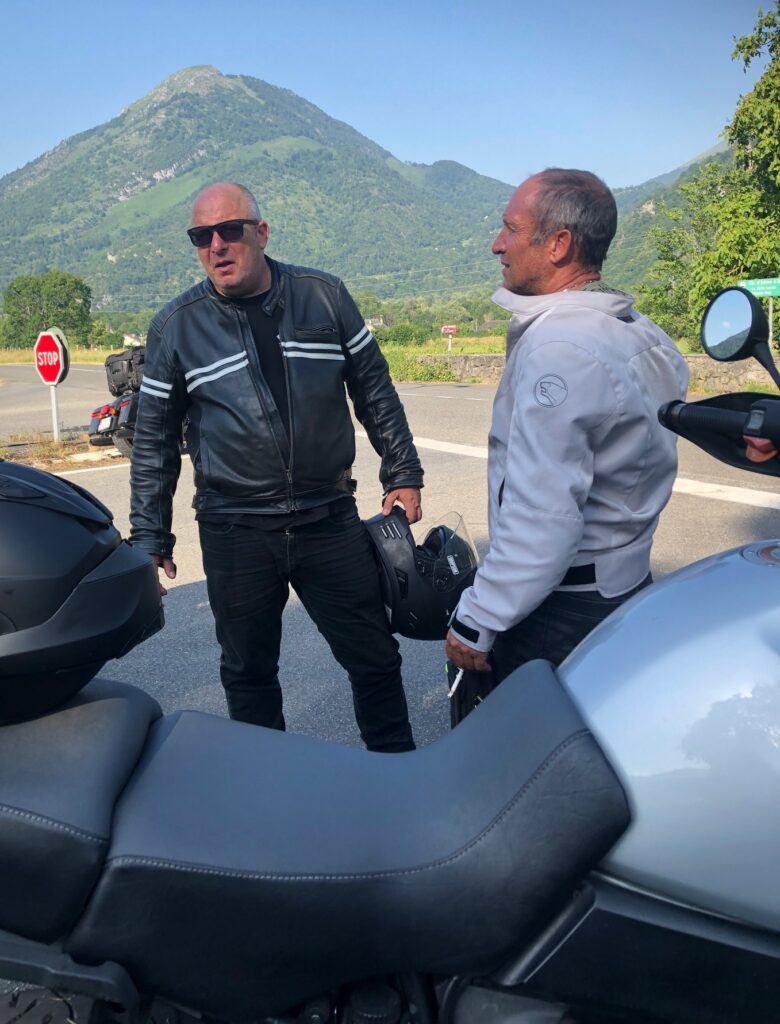













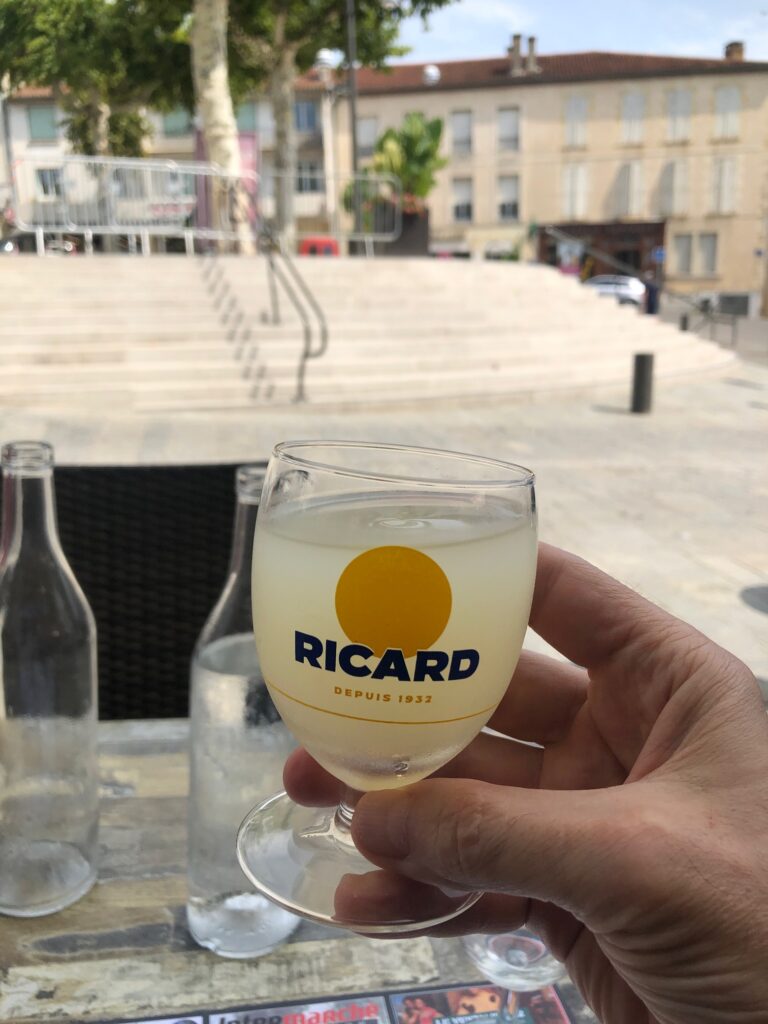







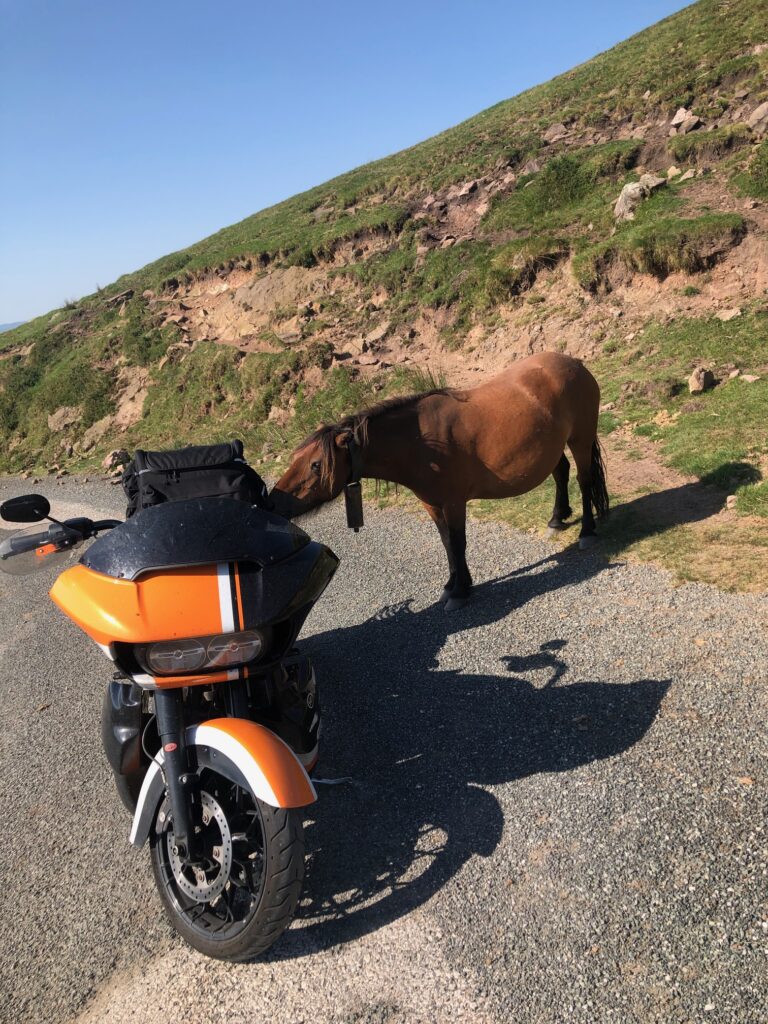


























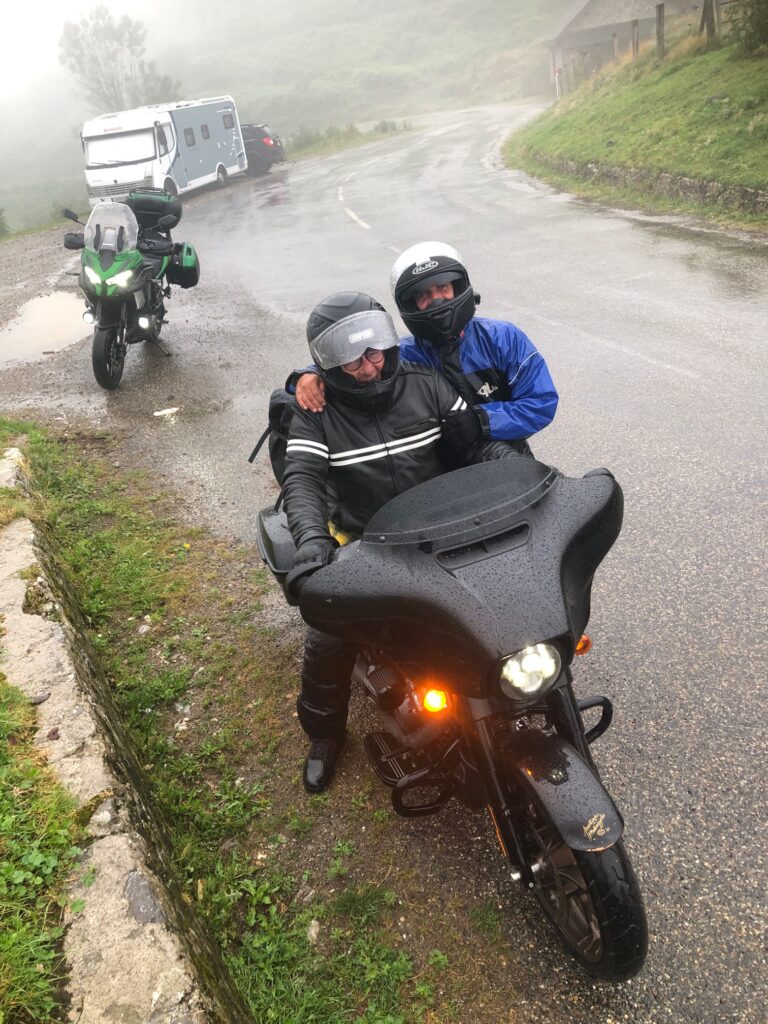


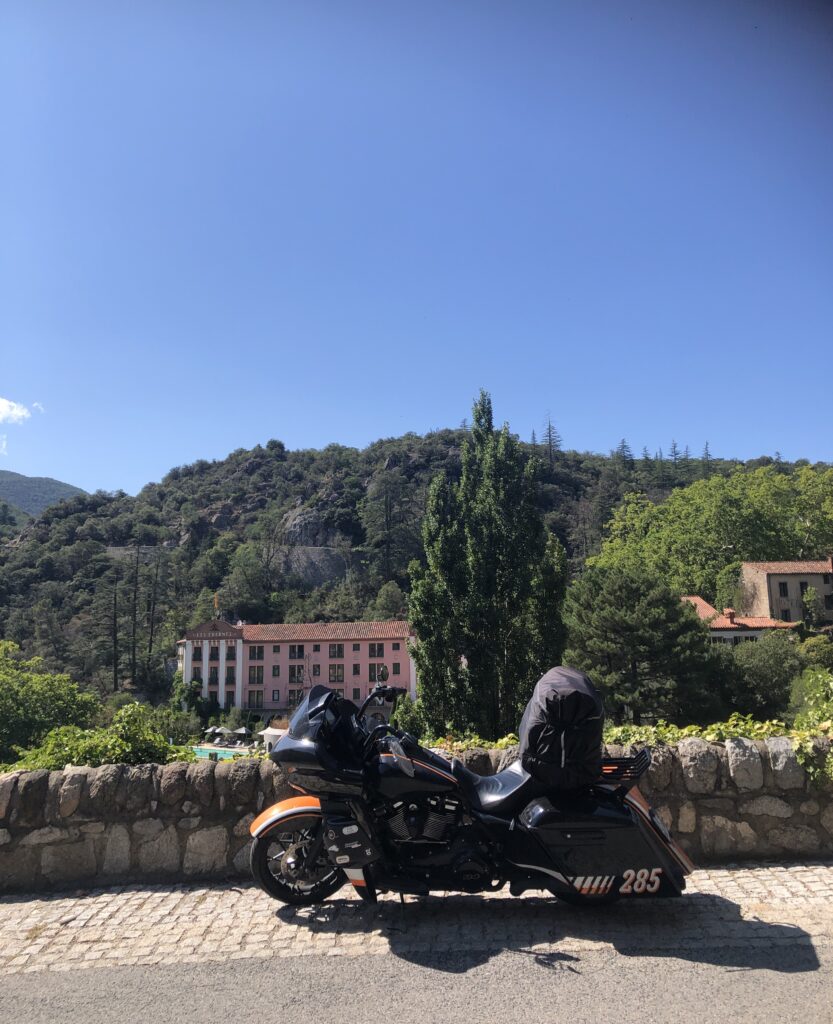













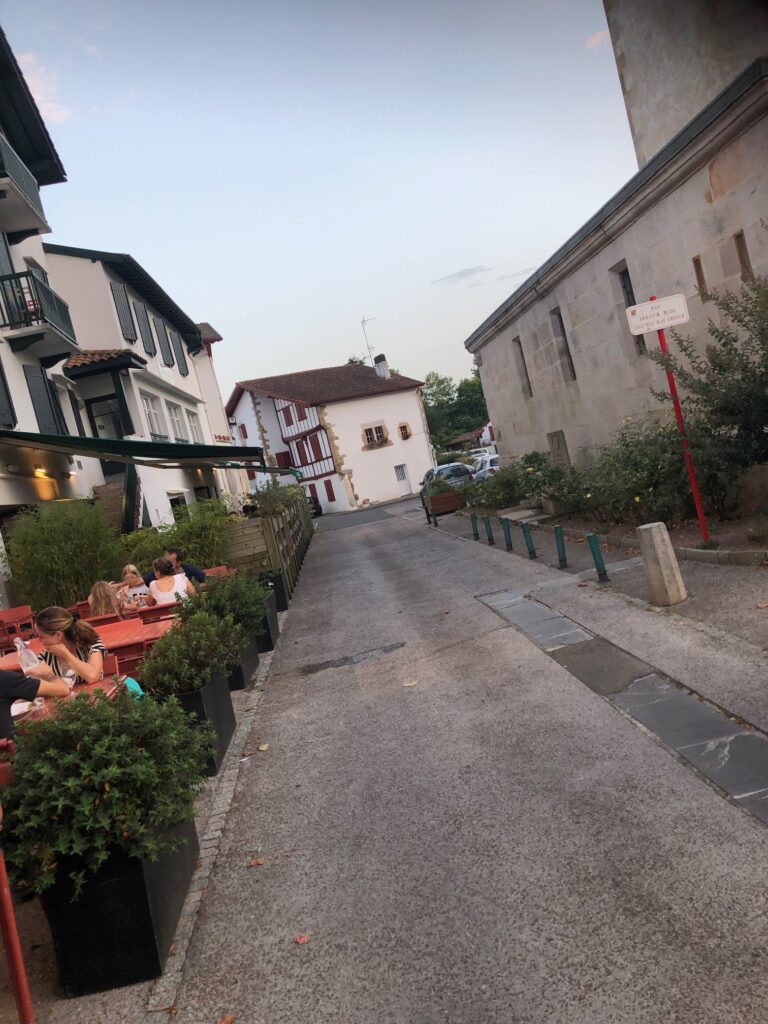







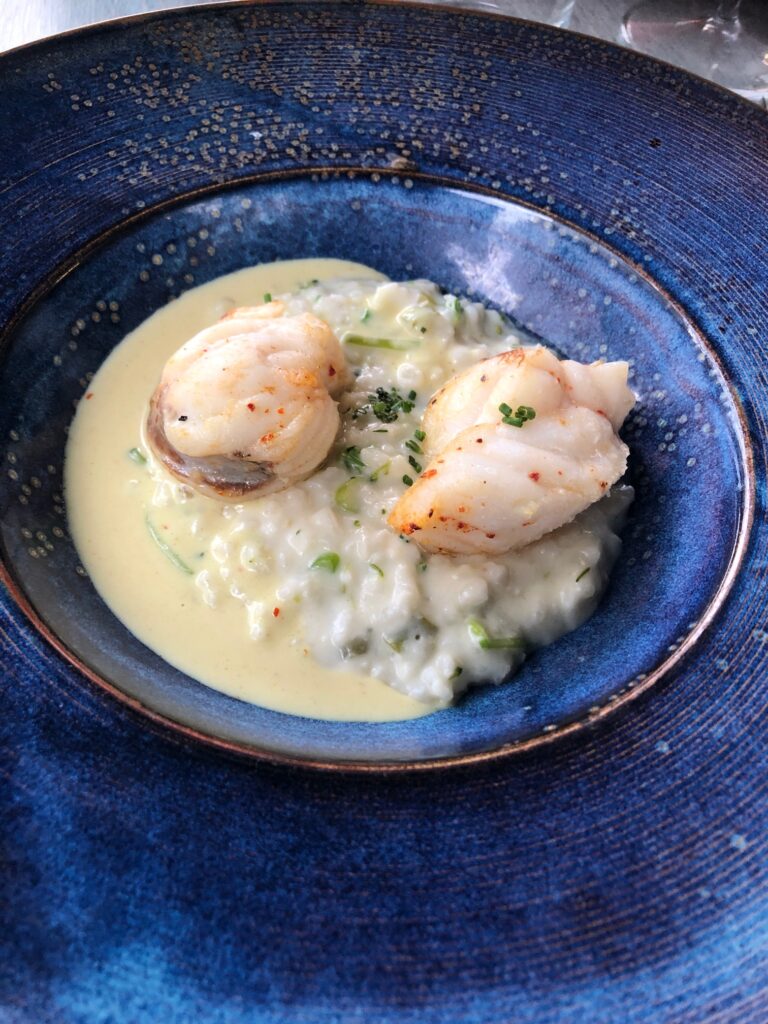








More Stories
RIDE TO THE GALLO-ROMAN SITE IN THE CENTER OF FRANCE
RIDE TO THE CASTLES
RIDE TO THE VALENCIA MARKET